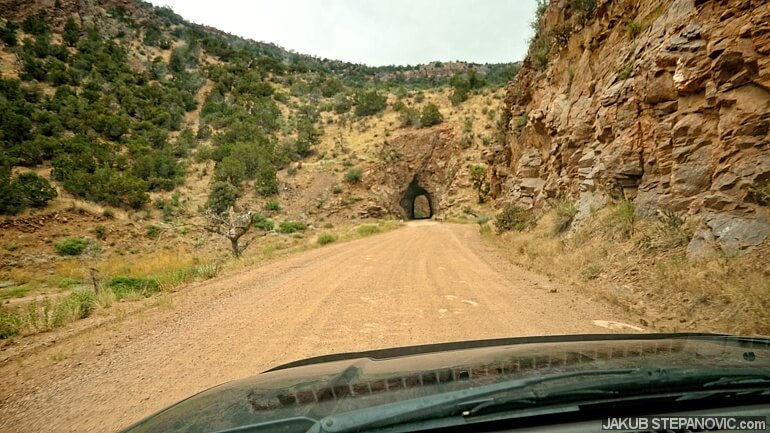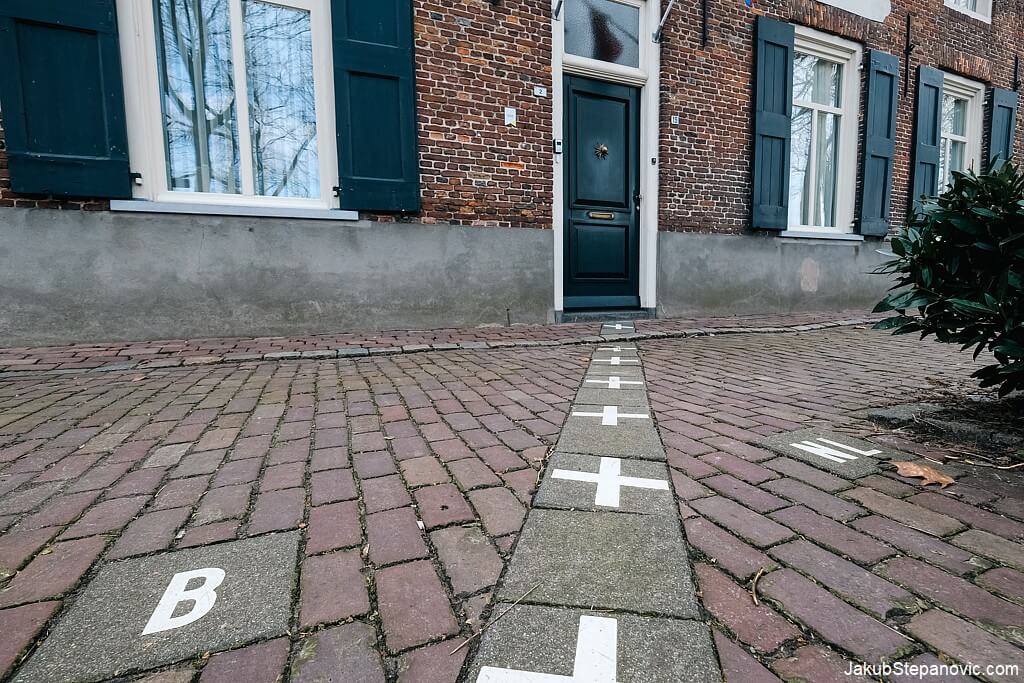
Exploring unique country borders revealed some of the best road cycling routes I've seen: A case for adopting abandoned railways into bike paths.
Since the 19th century, when railways revolutionized ground transportation, inventions of alternative ways to get people and goods around and sectoral transformation caused many once-busy lines to be no longer in use. Yet, the effort and resources that went into laying the tracks – many of which pass through beautiful landscapes – don't have to be lost. Like a former factory can be converted into a desirable property with new life, former tracks can serve new users.
The biggest ground-based competitors to trains are cars and trucks; however, while it is possible to convert old railways for them, it works only if the traffic is minimal because cars generally need much wider roads than train lines of the same throughput.

This former rail line in Colorado is now accessible to cars. Driving there is cool – when you are the only road user.
To maximize the benefits of adapting abandoned railways, we have to look for something with a smaller footprint than cars. Bikes, for example. They can easily fit even on a former narrow gauge, and since train lines never feature steep inclines or sharp turns, they are friendly for human-powered modes of transit. Moreover, because bikes do not cause the wear associated with fast-moving, heavier vehicles, it could sound like a no-brainer since fixing a century-old bridge for safe bike use is more affordable than doing so for cars. Still, these conversions do not always make great advertising for the cause.
My earliest recollection of seeing one was in Kansas, between Wichita's Eisenhower National Airport and the busy Hwy 54. I didn't see anyone cycling there, and considering the surroundings of bare warehouses and hangars, I also did not feel any urge to try it myself. The first time I biked on former train lines was in Scotland, but while they were interesting to visit, they weren't quite practical: they went either from nowhere to nowhere (Balmossie Viaduct), had so many interruptions that it was faster to cycle on parallel roads (Wormit-Tayport), or was in a pretty grim condition (Dundee-Newtyle). Unsurprisingly, they weren't used by many folks either. However, the low numbers are not the fault of the concept. The root of the success of these conversions is the same as building a cycling path from scratch: when they are designed well, people will come. Such was the case I saw in Helsinki, where the former railway Baana (the image atop this article) sees over a million cyclists annually [1]. Still, it felt like a singular case of a relatively short track.
The discovery of something more significant started after I cycled from Belgium to the Netherlands on another conversion, the former Tilburg-Turnhout train line.
The path is interesting as it crosses rather complex national borders. In the town of Baarle-Nassau, a short walk can take you from one country to another multiple times, and some houses are even split in the middle, half being in a different country. If you like maps, you might find the Baarle-Nassau case intriguing. I did, so I do, so I scanned the map to look at the other parts of Belgian borders to see if other oddities exist. They do indeed, and by chance, are centered around another former railway: Vennbahn. I started reading about it and learned that besides the intriguing section of the Belgian border, Vennbahn connects Germany and Luxemburg in what looks like a great outing. Right on, that's to be cycled!

A portion of Vennbahn, a train line turned into a greenway. Here, the path lies in Belgium, but the land on both sides is German.
Finally, Vennbahn also introduced me to RAVeL ("Autonomous Network of Slow Lanes" in English), which stands for 1,500 km of paths that used to be old railway lines or towpaths in Wallonia [2], and that is the real success story here.
Someone could argue that such an extent is not too impressive compared with other regions; for example, the US' Rails to Trails amounts to over 40,200 km of paths [3], ~27 times more than Wallonia has. But considering Wallonia is roughly 582 times smaller than the US, there is no contest. Rather than individual examples, RAVeL is indeed a network where one can smoothly go from one path to another across the entire region. It makes the experience so much better; when good roads link nice destinations, the trip has no gaps.
Here are five things that I especially appreciated on RAVeLs that I cycled on:
1) Bridges and tunnels: they allow you to bypass some road crossings without stopping and hills without breaking a sweat. Besides being convenient, it is fun!

2) Connectivity: The trails often lead away from busy roads but can take you straight to downtown. It links practical and pretty.

3) Fab surface: RAVeLs are generally in top shape; covering distance is a piece of cake.

4) Accessibility: Many RAVeLs start near railways that are still in use; it means you can take a train first and finish the last miles by bike, reaching more destinations with ease.

5) Tourist attractions: Some former double-track lines got one line converted for cycling and the other one was left for draisines – one can rent them to travel on the rails. It is like a history-themed amusement park ride but without fake props.
Moreover, old remnants, such as water cranes or semaphore signals from the steam era make one feel like they are cycling through a museum.

What's more, some of the former train stations are converted into restaurants, so an option to dry, rest, and refuel are never too far.
So it happened, RAVeLs made for some of the best stretches of cycling I did on asphalt (being off the pavement is a different story...). Dreams, either way.
Thanks for reading! If you have liked this article, you might also enjoy stories from Brittany (where I cycled on a former rail line between Douarnenez and Quimper), or something else from the Blog Archives.
Sources for numbers:
- Helsingin Baanan mittariin kilahti joulupäivänä ennätyksellinen vuoden miljoonas pyörämatka, Welling, Roosa/HS.fi (2020).
- Le site officiel du RAVeL et des Véloroutes en Wallonie (2025).
- About Rails to Trails Conservancy (2025).
In case you want to read more, I also found the following lists interesting:
- Rail trails in Germany, Bartoschek, Achim/Bahntrassenradeln.de (2025).
- Wikipedia's list of Greenways and paths on old railway tracks in France (2025).






Comments are closed.